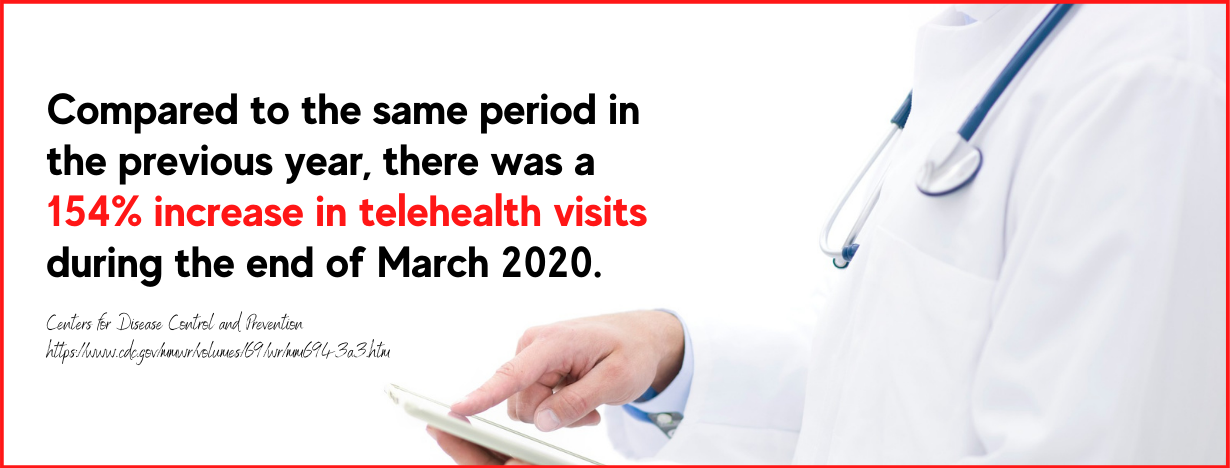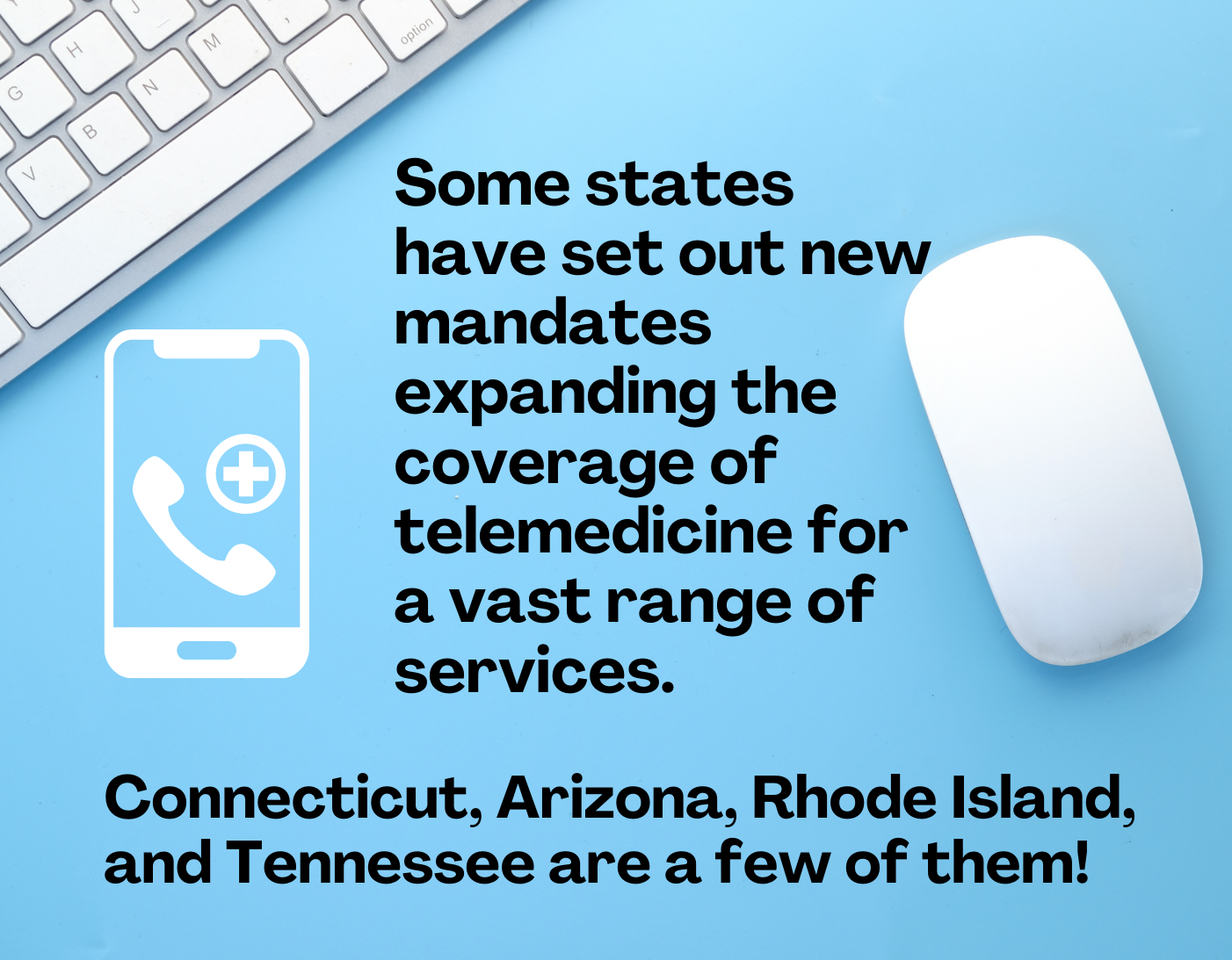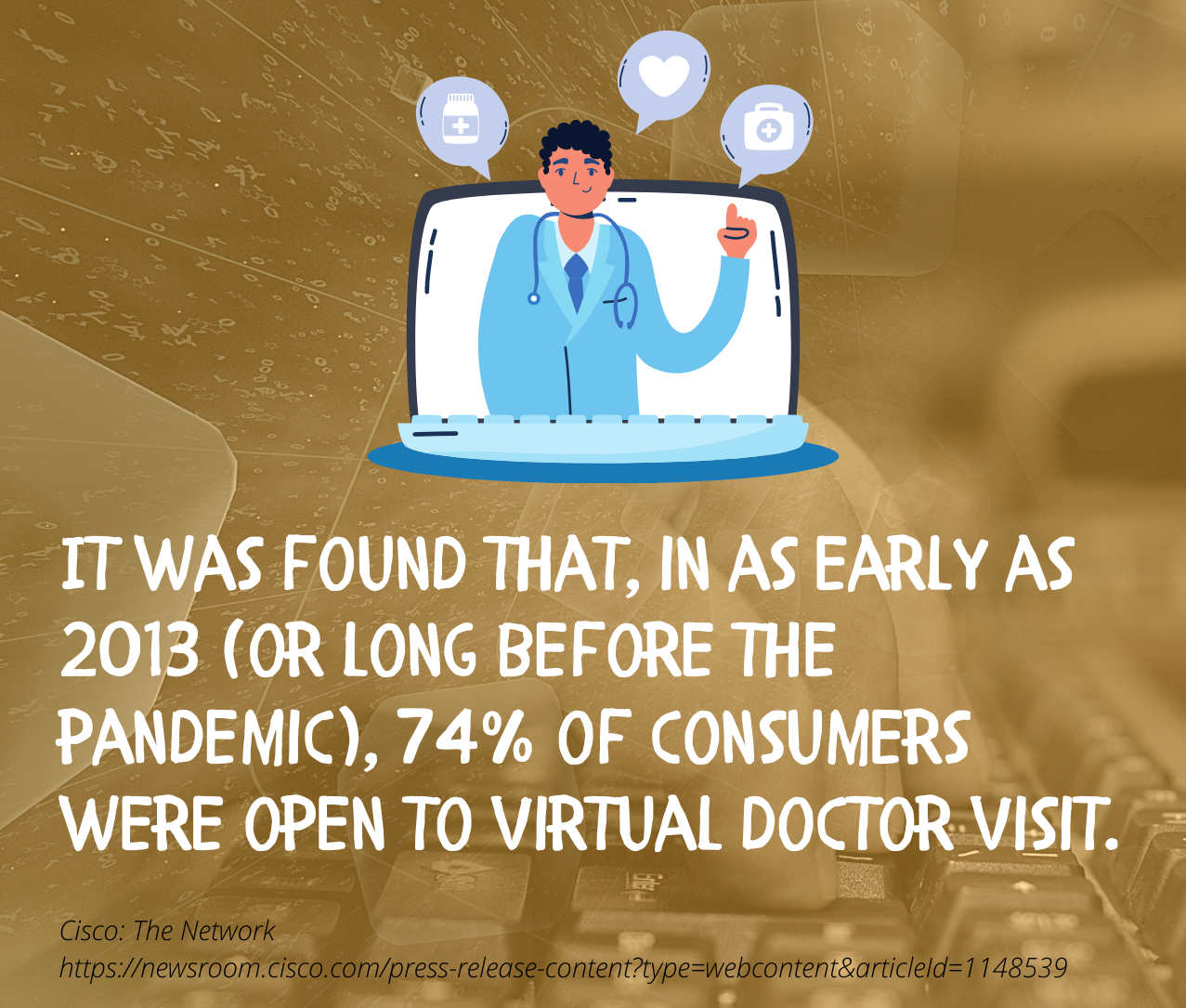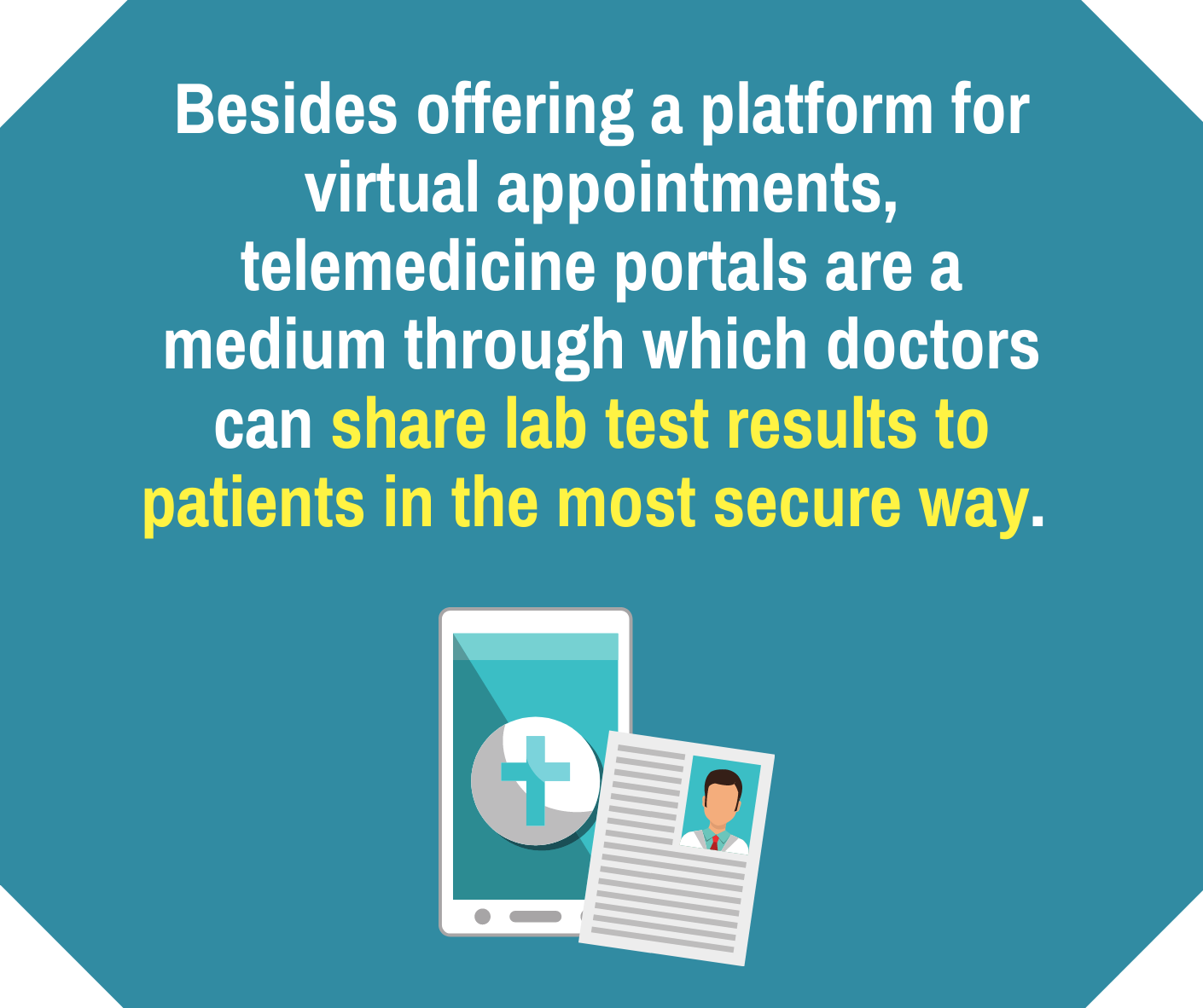Health care has evolved so much in the last few decades. While it is not something novel, health management in the home-based setting is revolutionized, owing mostly to the leaps and bounds in tech advancements.
This phenomenon gave birth to what is now known as telehealth – a broad term for remote healthcare services and technologies that aim to provide patient care right at home. It also includes remote non-clinical services such as continuing medical education, provider training, surveillance, health promotions, and many more.

A subset of telehealth, telemedicine has a more specific scope. It mainly focuses on the clinical services provided to patients remotely through the use of telecommunications. Thanks to this innovative method, patients can connect with their physicians wherever they are, allowing the latter to evaluate, diagnose, and treat them without having to be physically present.
Telemedicine has a great impact in rural and distant communities where access to health care proves quite difficult. That is why this practice became an indispensable part of the healthcare infrastructure.
There are more than 200 telemedicine networks in the US, with service sites numbering in over 3,000.
How Does Telemedicine Work?
Typically, providers implement telemedicine into their practice with the minimum requirement of a video conference software that can be used to deliver consultation. The software being used must comply with the requirements and regulations of HIPAA or the Health Insurance Portability and Accountability Act. Apart from the needed compliance, good telemedicine software should have several essential functions, including but not limited to EHR, payment, and waiting room.
Telemedicine is often conducted through an online patient portal or virtual appointment. One can use various devices for this, including smartphones and computers.
For the portal, one has to have an internet connection for access. The portal allows patients to send and get emails from healthcare professionals and providers, but more securely than traditional emails. They can use this to ask for prescription refills, too. A telemedicine portal benefits patients by serving as a medium through which doctors can send the laboratory and image test results. The patient portal has security measures that require one to log in with their username and password before they can access anything.
Another common telemedicine method is the use of secure virtual conferencing software. In this case, patients can request an appointment with doctors through phone calls or video conference, allowing them to meet their physician in real-time, albeit virtually. It is the best way to get in touch and consult with mental and behavioral health professionals. It can be used in place of a physical doctor’s visit, making it a useful replacement for follow-up checkups, primary and urgent care, and medication management.
Telemedicine is also used to monitor patients remotely. It allows physicians to check a patient’s vital signs without having to be there. Remote patient monitoring is ideal for managing high-risk patients currently released from the hospital and even for those with chronic conditions. This includes diabetic patients whose glucose levels require regular tracking. It is also a brilliant method of tracking the progress of elderly patients at home or in facilities.
Applications of Telemedicine
Most useful to medical specialties like radiology, mental health, pediatric, and dermatology, among many others, telemedicine can be utilized by the healthcare system to assist patients in various ways. It includes the following:
Manage Medication
Medication is an important aspect of patient care. It is especially vital to older adults who might tend to forget when to take it. With telemedicine, senior patients can be monitored by providers and healthcare professionals, making sure they take their medicine at the right time. This helps minimize complications and readmissions.
Deal with Chronic Disease
Those who suffer from chronic diseases require constant monitoring. However, if they are being taken care of at home, it can be hard to monitor their progress. This is where telemedicine comes to the rescue. It allows physicians to oversee patients’ health even when they are not physically present using high-tech medical devices. They often use touchscreen technology to monitor the patients’ vitals, including heart rate, glucose levels, blood pressure, and so much more. The data can then be transmitted virtually.
Share Medical Record
Medical information is crucial. It is often confidential and cannot be stored and forwarded carelessly. But through telemedicine, providers can now store, retrieve, and send share information over a distance. They can connect with other healthcare professionals from another location. The information will include blood analysis, diagnostic images, and other important records to help physicians with a real-time assessment.
Divert Emergency Room Cases
It is not a secret that emergency rooms can be overcrowded and stressful for patients. Telemedicine intervenes and minimizes the chances of being made to wait and get stressed by giving patients the means to connect with their physicians with a video chat before declaring the medical situation emergency. This will let the physician determine whether they require emergency intervention or not.
Challenges of Telemedicine
While telemedicine offers an array of benefits, there are still challenges surrounding this healthcare method. Some of these include:

- It is not a one-stop shop for all sorts of medical services. There are limitations to remote doctor visits. Medical exams that need hands-on approaches like imaging and blood tests still require physical presence for a diagnosis.
- Technology access can be a hindrance to many patients. After all, lower-income people can find it hard to use video calling for the lack of devices or stable connection. Audio-only appointments will do, but video appointments are more effective.
- Chatbots are not always reliable. While it offers convenience and time efficiency to check symptoms or ask for medical information, they are not always accurate. It is still different when one gets to talk to a real physician who can read the context and provide better medical opinions.
- There are also concerns raised about data security. Yes, telemedicine services are bound by the law to use secure networks and software. There is still a possibility of cybercrimes that can breach the system and get personal and private healthcare information.
- There are many cases where an in-person visit is still more appropriate, usually due to urgency and a person’s underlying condition. Emergencies are not possible to take care of with telemedicine alone. In short, telemedicine could not replace physical visits to a health care provider.
Telemedicine in the Time of COVID-19
There is a noticeable spike in the need for telemedicine during the time of the pandemic. This is, in part, spurred by the social distancing protocols, forcing providers to find a safer, more convenient, and more efficient way for patients to access healthcare. The Centers for Disease Control and Prevention noted a 154% increase in telehealth visits during the end of March 2020 alone. This is compared to the data in the same period the year before.
The healthcare system greatly benefitted from telehealth in general and telemedicine in particular, as it allows providers to expand access to patient care while minimizing the exposure to the virus of both the staff and the patients. The patient demand on facilities is dramatically reduced, which means lesser pressure on healthcare professionals and reduced scarcity in personal protective equipment supplies.
Many healthcare facilities and providers scrambled to offer clinical services through virtual technology. The impact is strong, especially when one considers the need for self-isolation for those who exhibit coronavirus disease symptoms. It helps a lot in minimizing the risk of transmission.
In many cases, telehealth is being used to screen patients for COVID-19 symptoms and assess potential exposure. This is done through the use of online screening tools, mobile applications, and virtual telemedicine visits. Patients who experience symptoms that point to COVID-19 can get evaluated from their homes’ comfort and safety. The severity of their symptoms can be assessed before their admission to hospitals or medical facilities.
Telemedicine is also a huge help in monitoring patients, particularly those who exhibit COVID-19 symptoms. Physicians can check in with patients regularly, ensuring their condition is not a cause for worry and determining if they need to be hospitalized. This means those who can manage their symptoms at home do not have to travel to a health care facility unless necessary.
It is not only COVID-19 patients who greatly benefited from telemedicine. It is also very useful for non-COVID-19 patients who need access to essential healthcare. They can avoid in-person encounters and the risk of infection. Routine care and follow-up visits can be done through telemedicine, especially when it is not practical or feasible to do an in-person one.
Why is Telemedicine Here to Stay?

In 2019, the telemedicine market was valued at $45 billion. This number is expected to reach a staggering value projection of $175.5 billion in 2026.
While it is only understandable that telemedicine is exceedingly used during the pandemic, the reality is that it is here to stay. It is no longer a convenient novelty but a must-have in changing times. Its usefulness goes beyond the COVID-19 crisis, making it indispensable even when normal life returns.
Here are ten reasons why:
There is an increasing willingness from insurance companies to reimburse telemedicine services.
Even before the onslaught of COVID-19, there is already a budding sentiment among insurance companies to embrace telehealth and, in extension, its subset, telemedicine. It was in 2015 when the Blue Cross and Blue Shield of Alabama shifted their gears and stopped resisting paying their clients’ telehealth services. The insurer cited the rapid advances in technologies that enable telehealth as the main reason for their submission. They started paying providers for a few telemedicine services. This includes fees for behavioral health, dermatologic conditions, stroke, and even infectious diseases. Their main motivation was to help the rural communities they serve to have enhanced access to quality healthcare.
Fast forward to the pandemic. The peak of the coronavirus saw the spending on telemedicine services increased tenfold. Through Medicare, the federal government was billed nearly $4 billion for telehealth visits in March and April. This is a staggering increase from last year’s bill in the same period. The first insurer to make the telehealth services permanent was said to be the BlueCross BlueShield of Tennessee. Other insurers soon followed suit, including Blue Cross plan in North Carolina and Cigna. They committed to covering telehealth services through the end of the year.
Some insurers relented by waiving cost-sharing temporarily, covering deductibles, coinsurance, and copays for all virtual visits. There were also instances when insurance companies elected to cover the full cost of virtual visits as long as one uses the insurer’s preferred virtual provider. This is the case with Florida Blue, which struck a partnership with Teladoc, a telemedicine company.
In a recent article by AARP, FAIR Health, a national independent non-profit organization aiming to bring transparency to health care costs and insurance, states that there is an incredible 5,680 percent increase in private insurance claims. While many insurers are expected to scale back on the insurance coverage for telehealth and telemedicine services, there is clamor and need for such services, and it is likely to dictate the future decisions of insurance companies.
Policy reforms and shifts helped in solidifying the benefits of telemedicine and overcame its challenges.
The COVID-19 pandemic led to numerous policy shifts and changes. Some of which are connected to insurance and reimbursements for telemedicine services. Many governments have imposed regulatory restrictions in the effort to protect patient safety and privacy.
Some states set out new mandates that expand coverage of telemedicine for a vast range of services. Connecticut permitted additional providers to deliver care through telemedicine, including dentists, occupational and therapy assistants, and genetic counselors. On the other hand, the Arizona governor issued an order that required health insurers to expand their coverage on telemedicine services until the emergency ends. Rhode Island mandated private health insurers to extend primary care coverage, behavioral health care, and specialty care.
While some of these mandates will expire at the end of the public health emergency, some states moved to make the mandates permanent. One of them is Idaho. Their governor signed an executive order in June 2020 to put some 150 rules on telemedicine services permanently. The same happened to New Hampshire, where some telemedicine mandates such as requiring private payers to reimburse for telemedicine services in the same scope with in-person health care services were elected to stay.
The Senate health committee chair, Tennessee Senator Lamar Alexander, had introduced the Telehealth Modernization Act in August 2020. This aims to codify and expand telehealth coverage. There were some serious considerations about increasing the coverage for a broad range of telemedicine services.
These moves and measures ensure that telemedicine is not going anywhere anytime soon. It also solidifies its advantages and helps weather the challenges that make telemedicine a not-so-ideal choice, mainly in insurance coverage and reimbursements.
Telemedicine transcends distance to make health care accessible even for those in remote areas.
One of the major challenges the healthcare system faces is the difficulty of bringing health care to remote areas. Rural communities, in particular, have little to no access to quality healthcare due to distance. Most of the patients from those areas have to give tremendous sacrifices in terms of money, effort, and time to avail healthcare service.
Transportation, for example, is especially hard for specialty care patients and adult populations. With telemedicine, they are allowed to remain in the comforts of their home as they recover. It also helps them feel more independent, especially those who suffer from chronic diseases. A study found that a home-telehealth strategy for care coordination can improve functional independence in non-institutionalized veterans with chronic disease.
The introduction of telemedicine minimized the obstacles posed by accessibility and allows patients to save transportation costs and much-needed energy. It became a bridge connecting patients to physicians and other healthcare professionals without the need for in-person visits.
Wait time is drastically reduced since telemedicine allows assessments before appointments.
With virtual care, they can avail services otherwise out of their reach, including remote analysis and monitoring.
One aspect of patient care that is made even more efficient by telemedicine is preventative care. Telemedicine plays a huge role in lowering down the process for regular check-ins, making it possible to apply interventions at the earliest time.
Telemedicine can also fill the gaps in other important healthcare areas, including:
- Emergency care – This one allows real-time evaluations and consultations and a variety of other emergency services.
- Intensive care units (ICU) – It is easier for healthcare providers to give around-the-clock critical care patient monitoring through telemedicine.
- Telepharmacy – Isolated areas often have trouble accessing pharmacy services. Telemedicine can help arrange for medications and medication counseling with the assistance of community pharmacies.
There is an increasing demand for virtual care options from patients and their families.
A study conducted by Cisco showed that 74% of consumers are open to the idea of virtual doctor visits. The COVID-19 pandemic underscored the importance of telemedicine. In-person visits could compound the spread of the virus. Hence many healthcare providers tried to stem physical visits for various patient needs, whether it is treating chronic conditions or mental health services. Telemedicine also made it easier to evaluate cough and cold symptoms and ensure they are not a cause for alarm. The demand for telemedicine has more than doubled in these trying times.
Telemedicine support has increased, too. Google rolled out new Search and Maps features that make it easier and more efficient for those who want to connect to a virtual health option. They allowed hospitals, doctors, and mental health professionals to enter their link to their virtual care website on their Business Profile so that when someone searches for them, the latter will be automatically redirected to the relevant site upon clicking the link.
But the relevance of telemedicine does not stop at the peak of the pandemic. Patients will continue to seek virtual care options, especially now that more healthcare providers are starting to integrate telemedicine with in-person healthcare services. This leads to more personalized care, enabling easier access to much-needed care and reducing costs in the process. Telemedicine programs during the pandemic are more likely to be continued and maintained moving forward, as these can provide advanced and enhanced services to consumers.

Just imagine parents not needing to take time off work for a healthcare visit. It can be done during break hours in any place that offers sufficient privacy. Children and the elderly do not have to go through the stress of going to the clinic to be told that their healthcare needs can be managed at home. It can also lessen the time and energy they expend in the waiting room, alleviating healthcare professionals’ pressure in the process. It reduces the risks posed by going out and mingling with the crowd.
The world has grown digital, forcing the healthcare system to adapt or risk getting left behind quickly.
The continuous advancements in technology make telemedicine a viable and efficient option for patient care and other services. The digital era has reshaped the healthcare system into what it is today. It promises a longer and better life drawn from better health outcomes.
When the pandemic hit, healthcare providers and leaders quickly adapted to the situation by utilizing telemedicine’s usefulness. This led to their discovery of telemedicine’s expansive impact and effectiveness, whether in triaging care, emotional support, or critical care guidance. Individuals, now more than ever, have become more receptive to remote and technology-based health care models. All they need is a computer or smartphone and a good internet connection to access some telemedicine services.
On top of that, it is far easier for medical practitioners and healthcare providers to offer telemedicine services now that technology and digital-based solutions are more accessible than ever. A lot of recent innovations and trends will contribute to a more powerful telemedicine option.
One example is the advent of AI (artificial intelligence) and machine learning. This aspect of technology can run data collected from virtual patients to get better health outcomes. Algorithms can assess healthcare professionals in assessing and diagnosing simple health issues and provide a more customized patient guideline. It helps create a more efficient method of gathering, storing, and retrieving medical information.
There are also advances in the field of internet connection. The launch of 5G cellular networks means more and more people can access telemedicine from a wider range of locations. The 5G network’s support of private networks can also be a great incentive to those gearing for telemedicine expansion where privacy is of utmost importance.
Moreover, new consumer technologies like wearables, sensors, and augmented reality revolutionize telemedicine. For one, wearable devices can collect patient data like heart rate, ECG, and many others, making them useful in the remote assessment. Video conferences are further enhanced by augmented reality, giving the patients and physicians a realistic meeting despite the distance.
These current technology trends may continue to progress and provide even better digital solutions geared towards telemedicine in the future. That is why healthcare providers are advised to capitalize on advancements as early as possible or risk getting left behind by their competitors.
Telemedicine is becoming the answer to provider shortages, especially in primary and specialty care.
There is a projected shortage of physicians by 2032, to the tune of 122,000. The demand for physicians is only expected to grow faster than the supply, as underlined by data from American Medical Colleges’ Association. The growing and aging population compound the problem. The bulk of the shortages are for primary care and specialty care. This is one area where telemedicine can be of huge help.
With the use of technology, it is possible to expand the reach of providers. According to one research, physicians can deliver 60% of their existing services through telemedicine, ranging from minor to acute illness. Fields like dermatology and psychiatry can also take advantage of telemedicine. Not only does it offer a faster, short-term solution for a physician shortage, it can also lessen the pressure on physicians by providing them with a means to connect with patients without the physical toll. They can set appointments virtually to assess whether a patient needs physical medical visits. This also helps ease the burden on other healthcare professionals who can focus their energy on those who need urgent care.
Telemedicine eliminates long waits and canceled appointments. It is easier for patients to juggle their time and access virtual visits at the most convenient schedule for them. On-demand healthcare services are an ideal option for both the patient and healthcare professional, as it maximizes the time they have on their hands.
Overcrowding in clinics, and hospitals, and other healthcare facilities can be significantly reduced. It is manageable for physicians to monitor their patients remotely. Should there be changes in patients’ condition, physicians can easily request and arrange for a test or procedure in person. Apart from these logistics, healthcare providers can see an opportunity to cut administrative costs.
Telemedicine introduces new ways to engage patients in their treatment, ushering in better patient outcomes.
While there is a great demand for patient care, healthcare providers are still struggling with the best way to engage patients for better health outcomes. It is not uncommon for medical practices and hospitals to seek better coordination with patients, which safeguards their reputation and increases consumer trust. Besides, there is fierce competition among health care providers where better service means more clients. This forces providers to follow a proactive treatment approach instead of reactive models.
Providers also aim to enhance patient compliance when it comes to their treatment. A diabetic patient, for example, can be engaged to take part in their treatment journey by practicing better eating habits. Patients are encouraged to take their medications at the right time and with the right dosage. Ultimately, telemedicine serves as the vehicle through which providers and patients work together to improve health. All of these impact their health outcomes and contribute to patient satisfaction.
Some providers offer patients online access to their medical records and results through a secure communication portal. Patients can monitor their progress and continue their treatment without the disruption of in-person visits. Generally, non-life-threatening conditions can be easily managed with telemedicine services, from receiving prescriptions to treatments. Many healthcare providers strike partnerships with retail pharmacies, making it more convenient and efficient for patients to receive their prescribed medicines. Follow-up treatments are also more convenient, especially in surgery cases where physicians can monitor patients through a telehealth visit.
The ease of access to health care also means patients are more motivated and empowered to seek treatment and practice preventative care, contributing to better health outcomes. Telemedicine can help create better and healthier communities by bringing physicians to underserved areas not easily reached by health care services.
Telemedicine reduces appointment cancellations and no-shows.
As discussed before, telemedicine is a great way to decongest traffic for in-person visits. Sometimes, patients travel far to get into a clinic, only to wait for a few more hours to get their turn. Others simply do not show up at their appointed time, mostly due to conflicting schedules and personal demands. It could be that patients forgot about their appointments or they got impatient from the long wait times. It is good to note that no-shows and cancellations can rack up fees that burden patients even more.
While it can be a hassle on the part of patients, it is even more so when healthcare providers have to deal with ruined appointment schedules. The valuable time they allot to a patient who did not show up could have meant providing healthcare services to another waiting patient in need. Of course, no-shows are not unavoidable. But missed opportunities can cost a lot, not only in terms of time and resources but also in finances. Patients might sometimes choose to reschedule, which will cost providers extra time and effort to do so. There are also cases where providers overbook because of inevitable no-shows – a stressful and frustrating time for patients who need to wait for their turn.
Now comes telemedicine, a practical solution to no-shows. Since telemedicine visits are far more convenient and affordable than in-person visits, patients will likely show up to their scheduled appointments. Some telemedicine services are available asynchronously, which means they can be accessed 24/7.
Other providers put out on-demand telemedicine services. This drastically reduces the possibilities of no-shows and cancellations because patients choose when to reach out to providers. Same-day requests are even permissible, as long as there is an available slot in the physician’s schedule. Follow-ups and minor urgent care can be taken care of via telemedicine, which physicians can maximize by offering them as part of convenient telemedicine services.
Decentralized health care systems are an important consideration for the future, and telemedicine leads the way.
The healthcare system is way too centralized but lacks in coordination for high-quality health care services. As a result, there is a rising clamor for a decentralized model. The pandemic has compounded the congestion of healthcare facilities and physicians and other healthcare professionals’ shortages.
Traditional health care delivery methods just would not do anymore. It would prove more difficult in the long run to implement every healthcare need in a centralized hospital, from diagnosis and treatment to disease management. For one, it can be very costly, both on the part of patients and providers. Extending care outside the walls of a healthcare facility makes more sense in the age of digital technology.

Around 47% of the American population suffered from at least one chronic disease, according to one research. The overcapacity of some healthcare facilities can contribute to the delay of their health and maintenance care. The introduction of telemedicine means more efficient delivery of health care services to a wider population. It can help meet the demands for chronic disease management and preventative care.
Telemedicine can also be a way to manage medical data collected from patients efficiently. Health data can be quickly available when the need arises since it is stored and retrieved digitally. It can help optimize patient treatment through AI, which extracts and analyzes data gathered with more accuracy. This, in turn, can be used to create a more personalized treatment program for each patient.
